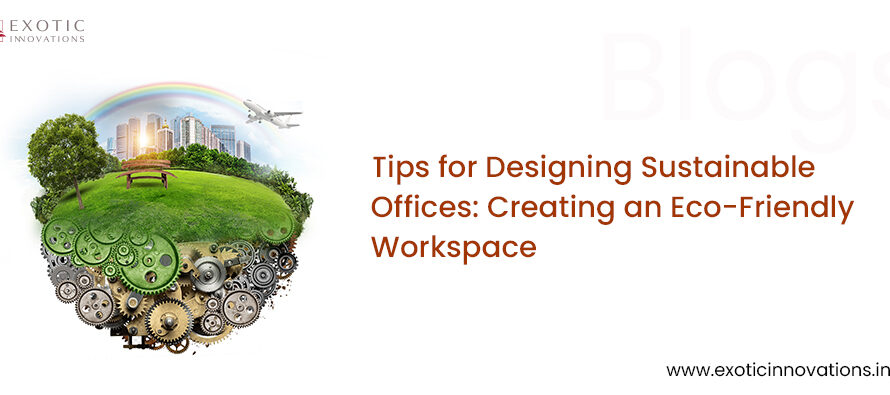As the world faces increasing environmental challenges, sustainability has become more than just a trend – it is a necessity for businesses committed to reducing their ecological footprint. Interior design and construction play a pivotal role in this movement, especially in the context of workspaces. By adopting zero-waste design, organizations can take significant steps toward creating environments that minimize waste, reduce resource consumption, and foster a culture of environmental responsibility. This approach not only benefits the planet but also enhances workplace functionality, employee well-being, and corporate reputation.
What is Zero Waste Design?
Zero waste design, in its essence, is a strategy aimed at reducing or eliminating waste throughout the entire lifecycle of a product or space, from conception to disposal. In the context of workspace interiors, it refers to designing, building, and maintaining office spaces in a way that minimizes waste generation. This includes the selection of sustainable materials, the use of renewable energy sources, and the reduction of construction debris. Additionally, it emphasizes reusing, repurposing, and recycling as much as possible, ensuring that resources are circulated back into the production cycle rather than being discarded.
At its core, zero-waste design seeks to align with the principles of a circular economy—a system in which resources are kept in use for as long as possible, extracting maximum value from them before recovery and regeneration. In workspace design, this can translate to sustainable materials, flexible designs that reduce the need for frequent renovations, and energy-efficient systems that minimize waste at every level.
The Growing Importance of Zero Waste in Workspaces
Workspaces, especially in the corporate world, are dynamic environments that evolve over time. As businesses grow, shift to hybrid work models, or renovate to adapt to new trends, workspace interiors undergo constant change. These changes often result in significant waste, ranging from discarded furniture to construction debris. In conventional design and build approaches, this waste often ends up in landfills, contributing to the environmental degradation that zero waste design seeks to prevent.Incorporating zero-waste design into workspace interiors is becoming increasingly important as organizations aim to demonstrate their commitment to sustainability. Beyond the environmental benefits, zero waste practices also offer substantial cost savings, operational efficiency, and brand enhancement. Moreover, employees are more likely to be engaged and satisfied in a workspace that promotes health, well-being, and corporate responsibility.
Strategies for Incorporating Zero Waste Design
One of the most effective ways to achieve zero waste in workspace interiors is through the careful selection of sustainable materials. The materials used in building and furnishing offices are critical to the overall environmental impact of the workspace. By opting for recycled, reclaimed, or biodegradable materials, companies can significantly reduce the consumption of virgin resources. For instance, reclaimed wood, recycled steel, and low-impact carpeting made from natural fibers are excellent alternatives to traditional, resource-intensive materials. Additionally, sourcing materials locally reduces the carbon footprint associated with transportation.
Another essential strategy is to adopt modular and flexible designs. Modular furniture and flexible layouts allow companies to adapt their spaces to evolving needs without the need for large-scale renovations. This reduces both material waste and the financial burden of constantly updating interiors. Modular systems are designed to be disassembled and reassembled easily, making it possible to reuse components in different configurations rather than discarding them during a redesign.
The construction phase is another area where waste can be minimized through zero waste design principles. Prefabrication and off-site construction methods allow for more accurate planning and material use, drastically reducing the waste typically generated on-site. Additionally, companies can work with suppliers that offer take-back programs, ensuring that unused materials or packaging are returned and reused rather than discarded. Thoughtful planning and precise measurements during the build phase can prevent excess materials from becoming waste.
Once the workspace is built, a focus on reuse and refurbishment becomes key. Rather than replacing old office furniture or equipment with new items, companies can refurbish and repurpose existing assets. For example, office chairs can be reupholstered, desks can be refinished, and lighting fixtures can be upgraded rather than replaced. This not only reduces waste but also lowers the cost associated with outfitting the workspace with new items.
A crucial aspect of zero waste design is also end-of-life management. Even the most well-designed workspaces will eventually require updates or changes, and when that happens, the materials used should be easy to recycle or repurpose. Using products that are cradle-to-cradle certified ensures that they can be safely returned to the environment or reintroduced into the production cycle. This not only prevents unnecessary waste from entering landfills but also closes the loop, allowing resources to be continuously reused.
The Benefits of Zero Waste Design in Workspaces
One of the most immediate benefits of zero-waste design is its positive environmental impact. By reducing the consumption of raw materials and lowering the amount of waste sent to landfills, this approach directly contributes to the preservation of natural resources. It also helps reduce greenhouse gas emissions by minimizing the need for new production and transportation of materials. In an era where climate change is a pressing issue, every step toward sustainability makes a difference.
Beyond environmental benefits, cost efficiency is another significant advantage of zero waste design. While sustainable materials and practices may have higher upfront costs, they often result in long-term savings. Durable, high-quality materials reduce the need for frequent replacements, while energy-efficient systems lower operational costs. Additionally, businesses may qualify for tax incentives or subsidies offered by governments to encourage sustainable practices.
Zero waste workspaces also contribute to employee well-being. Sustainable design often incorporates natural light, improved air quality, and the use of healthier, non-toxic materials. These elements create a more pleasant and productive environment for employees, reducing stress and boosting morale. Employees who work in environmentally responsible spaces may also feel a greater sense of pride and loyalty toward their employer, knowing that their company values sustainability.Furthermore, adopting zero waste design enhances a company’s corporate image. As more consumers and investors prioritize sustainability, businesses that demonstrate environmental responsibility are more likely to attract eco-conscious clients and stakeholders. In a competitive market, a strong commitment to zero waste practices can set a company apart and provide a unique selling point.
Moving Toward a Sustainable Future
Incorporating zero waste design into workspace interiors is not just a temporary trend—it is a forward-thinking approach that addresses both environmental challenges and business needs. As companies increasingly recognize the importance of sustainability, zero waste design provides a comprehensive solution that reduces waste, conserves resources, and promotes long-term efficiency. For businesses that are serious about contributing to a sustainable future, adopting zero waste design in their workspaces is an essential step.
By embracing these practices, companies can create workspaces that are not only functional and visually appealing but also responsible and sustainable. As the demand for greener offices grows, zero waste design will continue to play a crucial role in shaping the future of workspace interiors, leading us toward a better tomorrow—one where business success goes hand-in-hand with environmental stewardship.
Liked our blog? Share your opinion in the comments below!



